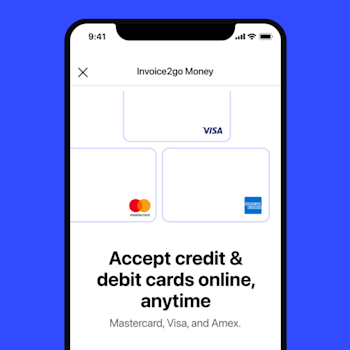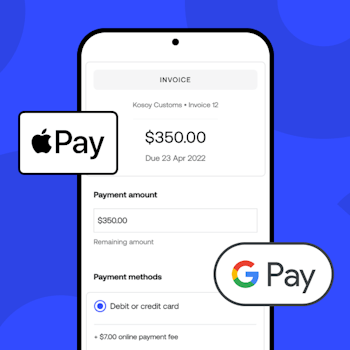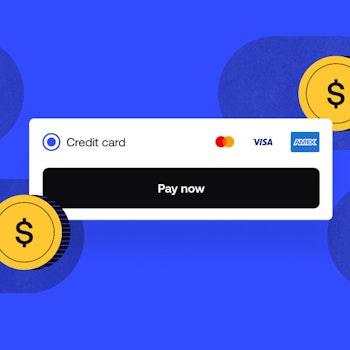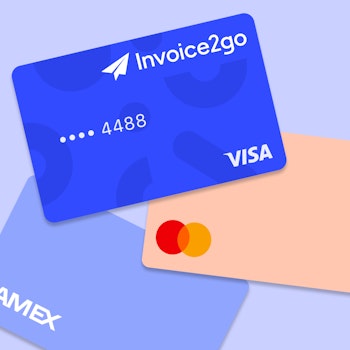
How to test a business idea (before you quit your day job)
Do you have an amazing business idea? An entrepreneurial spirit?
Starting a small business is an exciting endeavor, but it’s also a lot of hard work—and it’s not without risk. What seems like a good idea to you might not turn out to be successful for various reasons, so it’s vital to test it out before putting all your energy and resources into it. You certainly don’t want to quit your day job and lay it all on the line only to discover that your audience doesn’t share your passion.
So today, we’re going to talk about how to test a business idea—before you quit your day job. We’ve got plenty of tips and suggestions to ensure you do it right. By the time you’ve finished the process, you’ll either be ready to rock and roll or go back to the drawing board.
Either way, it’s a win. Even if your idea doesn’t live up to your initial vision, you’ll be closer to knowing what’s going to work for you—and, more importantly, what won’t.
Why it’s essential to test your new business ideas early on
No matter what kind of business you’re launching, you will have to put a lot of time, money, and sweat into it before it starts to bear fruit. You need to know if your new business model is viable, and without careful planning and a systematic approach, you could be wasting critical resources.
Testing your business ideas early on helps you learn if the idea is financially viable before you become heavily invested.
During the validation process, you’ll gain incredible insights on how to tweak your startup idea to suit your target audience better. Plus, you’re virtually guaranteed to pick up a lot of inspiration on how to make improvements.
As you put the pieces together, there’s no need to quit your day job right away. Once your new business idea starts growing and opportunities are rolling in, then you can take the leap to do it full-time. This approach for aspiring entrepreneurs and small businesses is far less stressful than struggling with no income as you navigate those critical first months.
How to test your business idea while you still have a day job: a step-by-step guide
Before you launch your business, you need a road map—a value proposition, a business plan based on market research, and testing. You need to know your potential customers and their motivations because they’re the ones who are going to buy and support your vision.
Let’s get started. Here are our practical tips and a step-by-step checklist on testing your business idea and then doing some fine-tuning.
1. Set aside focus time to work on your business idea
If you have a full-time job, chances are you already have plenty of responsibilities on your plate – time is limited and you’re likely tired after wrapping up work at your day job. Therefore, if you don’t intentionally set aside time to work on your business idea, you won’t get around to working on it.
Start by grabbing your calendar and setting aside five hours per week to work on your idea. Schedule based on what works best with your now. For example, you can spread this our one hour each day of the workweek or block off five hours on Sunday. It’s up to you as long as you get the work in each week.
While five hours may not seem like a lot of time, you can make incredible progress while avoiding burnout. Add more time to work on your business if comfortable, but this is an excellent place to start.
Create a comfortable workspace and seek to eliminate distractions. If you live with others, let them know about your business time to get support and space to focus. For example, if you have small children, perhaps your partner could take them to the park for you to get some work done. Then, you could repay the favor by doing something kind for them in return.
2. Create a test service
Now that you’ve established time and space to work productively, it’s time to develop your services. If you’re not exactly sure how to go about this, books are an excellent and inexpensive source of inspiration.
At this stage, you’re testing your own assumptions about the business idea. The sooner you can test your assumptions, the less risk you’ll have when it comes time to launch.
A test service is also known as a prototype, which is the best way to test your idea because it gives you a chance to demonstrate it in action.
Here are essential questions you want to answer at this stage:
- Who is your specific audience? In other words, who are you looking to serve? If you’re not exactly sure, click here for some helpful exercises.
- Is there market demand?
- What problem are you solving for your target market?
- What are the essential features needed to solve the problem?
Write out your answers and be as specific as possible. However, keep in mind that these answers will likely change as you test your idea and start to get feedback from friends, colleagues, and potential customers.
In many cases, writing a full business plan at this early stage is not always the best use of your time. Your idea will likely change a lot once you start talking to people, as they’ll no doubt give you a lot to think about.
3. Run your idea by a group of critics
You need honest feedback from people who are as close as possible to your target audience. Of course, you’re going to have to start somewhere, and your immediate network is often the best place.
However, keep in mind that your friends and family have a personal connection with you and might be objective with you. If you don’t consider this key factor, you could be introducing bias into the validation process, and that might be shy of the truth. On the other hand, it’s better to have a bias that you’re aware of than no feedback at all.
If appropriate, use your professional network to get objective critiques of your ideas. Ask a trusted colleague to give their thoughts about your service and emphasize a desire for their assessments about potential challenges and blockers.
Ideally, if you know people in your target industry who aren’t afraid to tell it like it is, seek out their input first. You might also open with a caveat, inviting them to be brutally honest.
Say things like, “Don’t be nice” and ask follow-up questions to help you get as much clarity as possible. If you’re uncomfortable asking for feedback in person, set up video conferences via Zoom or reach out to your network via email or LinkedIn.
Remember that you’re just testing out an idea and that it’s best to maintain an experimentation mindset. At this point, you’re just seeking more information, so emphasize listening without judgment and be open to adapting your idea as you learn more.
4. Connect with your target market
Next, talk to your customers. If you have an idea of who your target customers are, start interviewing people who fit that profile. Make a list of questions, but don’t hesitate to stray a little left (or right) of center if the conversation starts going that way. You can get the best inspiration from discussions that go on tangents!
Be curious about your interviewees’ needs, their pain points, and what’s working and not working in their current situation. You need to understand their motivations for wanting to solve the problem before you ride in on your white horse and make any claims.
5. Use the feedback from your target audience to hone your idea
Now it’s time to apply your learning from every conversation in steps three and four to tweaking your prototype.
For example, perhaps you discovered that many people thought you had a brilliant idea overall. However, you also learned that many your idea was too complicated, and were only interested in one or two of the features.
Now, these might not have been your favorite features, but your potential buyers think they’re pretty awesome—and they don’t care much about the rest. That’s gold. When you get back to the drawing board, you’ll have that many more things you can eliminate from your list of things to do because they don’t matter to the customer. And who are you building this for in the first place?
You need to have a starting point, but from there, you evolve based on the feedback you get. For any product or business idea in development, feedback should be ongoing and encouraged at every juncture. As the founder, you are close to the idea, so if you shut yourself off from feedback, you’re working in a vacuum. And that’s never sustainable.
6. Create a landing page for a test website
Now that you’ve refined your business idea and gotten multiple answers to key questions, it’s time for the next steps.
Chances are when you’re talking to people, they’re going to be curious. Your online properties give them a place to go and leave their contact information so that you can stay in touch via email.
Then, as word begins to travel (and it will), your landing page and social presence will take greater importance. Your ideas will evolve, and so will your content. However, once the ball gets rolling, you might be exceedingly busy running your business and might not have as much valuable time for web design.
Plus, your landing page and social accounts deliver a critical asset: analytics. This data tells you a lot about who’s visiting your sites, what they’re most interested in, where they’re located—all critical information you can use to develop and target your service or product idea more precisely.
Social, on the other hand, is a way to engage potential customers. Be genuine about your journey, connect with influencers in your space, join groups, and speak your truth.
Your choice of channels will depend on your business niche and where your customers are. If you’re B2B, LinkedIn is probably a good place to put your efforts. Still, Facebook, Twitter, and Instagram all have their merits—IG, especially, if your product or service is highly visual.
7. Create your marketing plan—and use it!
All the good work you’ll do—testing your business idea and getting it to the launch phase—will be for naught if you don’t act on what you learn. Every bit of data you glean from this journey is an asset and should inform the way forward, but you need enough data to build a solid assumption.
If you only talk to a couple of people, that’s not enough data sources to inform your launch order. Without thoroughly completing the steps above, you can’t assume that your product is either a success or a failure. At that point, any money you spend on marketing won’t necessarily be put to good use.
How you market your new service will depend on your industry or target market. However, we have compiled a list of our top ways to get your first 10 paying customers.
Keep close tabs on what marketing strategies are working and which don’t provide much return. Ultimately, just like your business idea, your marketing strategy is an iterative process of build, measure, learn, repeat.
8. Continue evolving and experimenting
Nobody lands a perfect approach on the first try. Even serial entrepreneurs struggle and fail. Finding the right formula for your business model requires objectivity and a lot of experimentation. If you’re afraid to fail, you might not ever reach your full potential.
Remember: there’s no such thing as failure – it’s just feedback. If you’re afraid to fail, you might not adequately pursue new ideas or adequately test the product before launching it.
The business world today is in a constant state of flux. The past 18 months proved just how unpredictable, disruptive, and beyond-our-control events can be. Now more than ever, it’s about agility, mindset, and willingness to make mistakes and try different approaches.
By doing so, you’ll be preparing the ground for new ideas to come to light. Knowing what doesn’t work is just as vital as learning what does work. Falling makes us stronger, and it might help you develop strategies to protect your company from failure when it counts.
9. Continue to improve your offering based on feedback and lessons learned each day
Continuous improvement and evolution are key attributes of the world’s most successful companies and entrepreneurs.
As the world changes around you, how does your product or service adapt to meet those needs? As an innovator, you must always be alert to the problem/solution landscape and how you fit in. Customer reviews are an excellent source to improve your business idea continually.
Here are a few essential things to keep in mind as you work on your business each day:
- Empathize with the customer and their pain points
- Keep the problem firmly in focus
- Continue to innovate solutions to the problems
- Design and prototype the solutions
- Continually test the solutions to ensure they deliver on their promises
10. Take the leap to running your business full-time
Don’t expect to reach this step overnight. Some aspiring entrepreneurs take months or years before they’re able to quit their day job.
The previous nine steps are intended to help you build a solid business foundation, however, this final step needs cautious consideration. Are you fairly certain your business will continue to grow? Have you carefully assessed the risks and discussed them with your loved ones?
Check out how one Invoice2go subscriber made the decision to become a full-time photographer for inspiration. However, if you’re getting green lights from your customer base and network, it’s time to take the next step.
The validation process is one of discovery. It takes time and challenges your assumptions, and chances are, you’ve hit a few brick walls along the way. If you made it to step ten, that’s a huge accomplishment. However, being an entrepreneur means continually listening to your customers, testing ideas, and striving to deliver the best version of your product to the people who need it most.
Want to get feedback on your business idea? Join the Freelance Forum to connect with a vibrant, motivated, and entrepreneurial community that’s dedicated to finding success and improving how we all approach business. Your ideas are a big part of who you are, and we’re all stronger together.
Related Articles

How to accept credit card payments on Invoice2go in 3 simple steps

Accept payments online via Apple Pay and Google Pay

Must-not-miss write-offs as you wrap up 2022 year-end finances

5 ways accepting credit and debit card payments helps your business stay resilient

4 easy ways to increase cash flow today

What is Small Business Saturday and why is it important?
The features and surprising benefits of a well-designed packing slip
